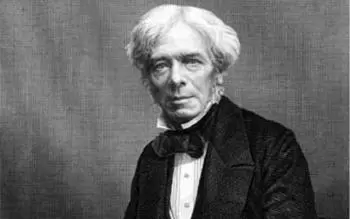
The conversion of electrical energy into mechanical energy by means of electro-magnetism was first demonstrated by the British scientist Michael Faraday in 1821. In his pilot he made the end of a free-hanging contact conductor with a pool of mercury in the that a permanent magnet was placed. At the moment when a current flows through the conductor, the driver performs a rotary movement around the magnet. In this way we obtain kinetic energy.
This electric motor is the simplest version of a homopolar motor. An improved form of this is the Barlow wheel. Due to their primitive construction, these electric motors can only be used for demonstration purposes. They are not suitable for any practical application.
In 1827, the Hungarian Ányos Jedlik began to experiment with rotating electromagnetic devices, which he called magnetic self-winding lightning. He used the device for instructional purposes at the university. In 1828 he demonstrated the first device that contained the three basic components of the direct current motor: stator, rotor and commutator. His electric motor also had no practical application, and his knowledge fell into oblivion.
First electric motors
The first commutative DC motor capable of feeding a tool was invented in 1832 by the British scientist William Sturgeon. Following the work of Sturgeon, the American Thomas Davenport built an improved DC motor with the intention of using it for practical purposes. Its electric motor, patented in 1837, rotated at 600 revolutions per minute, operated light machine tools and a printing press.
Due to the high cost of the zinc electrodes used in the batteries, its engine was not commercially successful and Davenport went bankrupt. Many inventors followed Sturgeon and Davenport in the development of the electric motor, but all faced the same problem: the high costs of battery power.
The modern DC motor was accidentally (re) discovered by Hippolyte Fontaine and Zénobe Gramme in 1873. When two gram dynamos were connected in parallel, one alternator worked like a motor, electrically driven by the other. The Gramme machine thus became the first and successful industrial electric motor.
In 1888, Nikola Tesla invented the first practical induction motor, which operated with a two-phase alternating current network. Tesla continued his work with the AC motor in the following years at the Westinghouse Company. Regardless of Tesla's research, Michail Doliwo-Dobrowolski developed the three-phase asynchronous motor with short circuit anchor at the same time (1888).